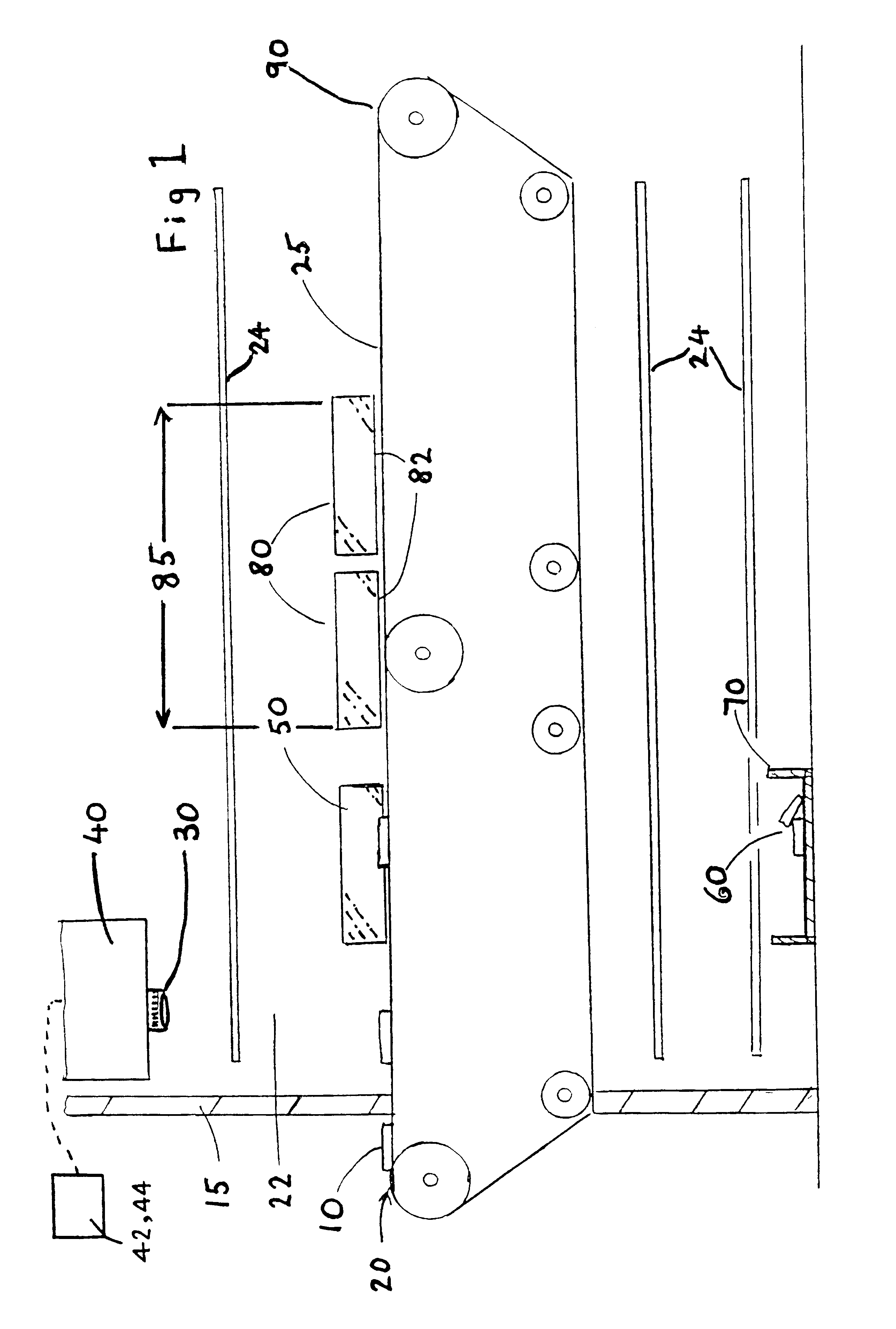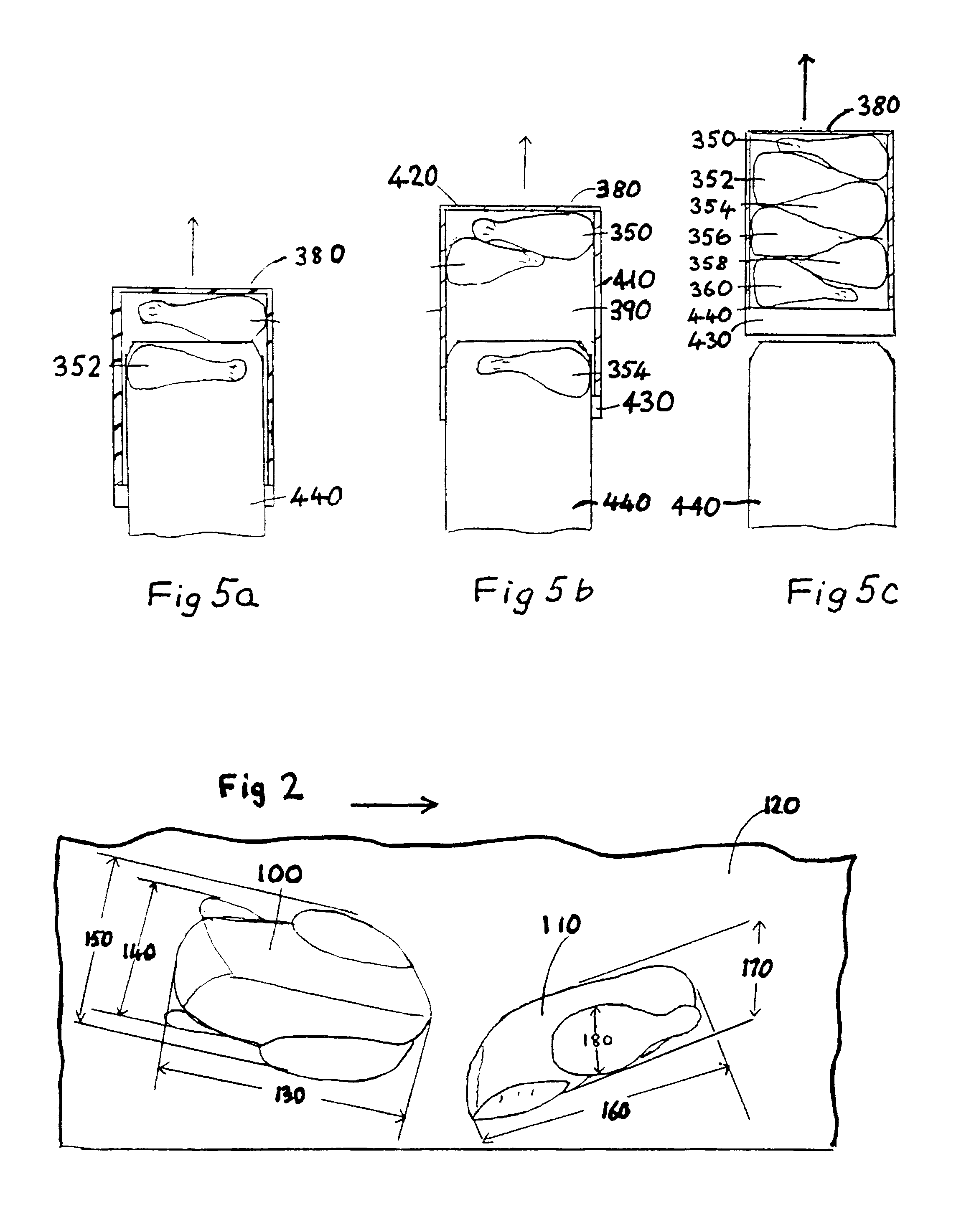Automated packaging
a packaging system and automatic technology, applied in the field of packaging, can solve the problems of frequent absenteeism, notoriously variable performance of such packaging systems, and high labor intensity, and achieve the effect of high throughput speed
- Summary
- Abstract
- Description
- Claims
- Application Information
AI Technical Summary
Benefits of technology
Problems solved by technology
Method used
Image
Examples
example 1
This example describes a chicken drumstick packaging line embodying the invention. In the following description, the functions of the IAS in obtaining an image, manipulating the image data and comparing them with reference data in a database, determining the position of a substrate, and controlling the operation of the line have been simplified to illustrate the working of the invention; in particular, it should be appreciated that the order in which the image is analysed will depend on software and is not crucial to the invention.
Referring to FIG. 7, the conveying means comprises primary indexing conveyor 500 and product line indexing conveyors 510, 520, 530. Primary indexing conveyor 500 and product line indexing conveyors 510, 520, 530 comprise plastic interlock belting 505 with raised flanges 540 defining compartments 560.
Chicken drumsticks 570 are initially conveyed, in the direction of arrow A, into the field of view 580 (shown by hashed lines in FIG. 7) of an IAS. The IAS obt...
example 2
The packaging line just described can be extended upstream to provide further automation to the system, incorporating an early alignment step, assessment of drumstick weight, and quality control steps.
Drumsticks are usually the last primals left on the gambrel in typical automated systems for poultry carcass breakdown. The fixed position of the gambrel in these systems makes it very practical as a reference point for image location by an IAS and for establishing inspection windows. Drumstick dimensions and quality attributes (including incomplete or inaccurate separation from the rest of the carcass) are obtainable before dismount. Since dismount from the gambrel is sequential, drumstick weights can be determined via an in-line weigh beam by difference.
FIG. 12 shows drumstick 940 attached to gambrel 955 at position I on processing line 960. The combined weight of tared gambrel 955 and drumsticks 950,940 is obtained before dismount via in-line weigh beam 1000. Drumstick 950 is then d...
example 3
This example outlines an alternative reject strategy. FIG. 15 shows two primary conveyors 1150, 1160. Drumsticks 1170, 1180 have entered the field of view 1190 (shown by dashed lines) of an IAS. Suitable software analyses the image obtained, firstly by providing suitable windows to separate out the image of each drumstick for separate analysis. Incidental background detail of conveyors 1150, 1160 is dropped out from the image, and data as discussed in example 1 above are obtained for each drumstick. Weights are obtained via weighscales 1200, 1210. Drumsticks flagged for rejection at this stage will be rejected by pushrod 1220 (serving conveyor 1150) or pushrod 1230 (serving conveyor 1160) pushing the product into reject chute 1240. Rejection of product at this stage ensures that the subsequent linear motion of the product positioner is always limited to a single index, thus simplifying both movement and control.
PUM
| Property | Measurement | Unit |
|---|---|---|
| Weight | aaaaa | aaaaa |
| Color | aaaaa | aaaaa |
| Size | aaaaa | aaaaa |
Abstract
Description
Claims
Application Information
 Login to View More
Login to View More - R&D
- Intellectual Property
- Life Sciences
- Materials
- Tech Scout
- Unparalleled Data Quality
- Higher Quality Content
- 60% Fewer Hallucinations
Browse by: Latest US Patents, China's latest patents, Technical Efficacy Thesaurus, Application Domain, Technology Topic, Popular Technical Reports.
© 2025 PatSnap. All rights reserved.Legal|Privacy policy|Modern Slavery Act Transparency Statement|Sitemap|About US| Contact US: help@patsnap.com



